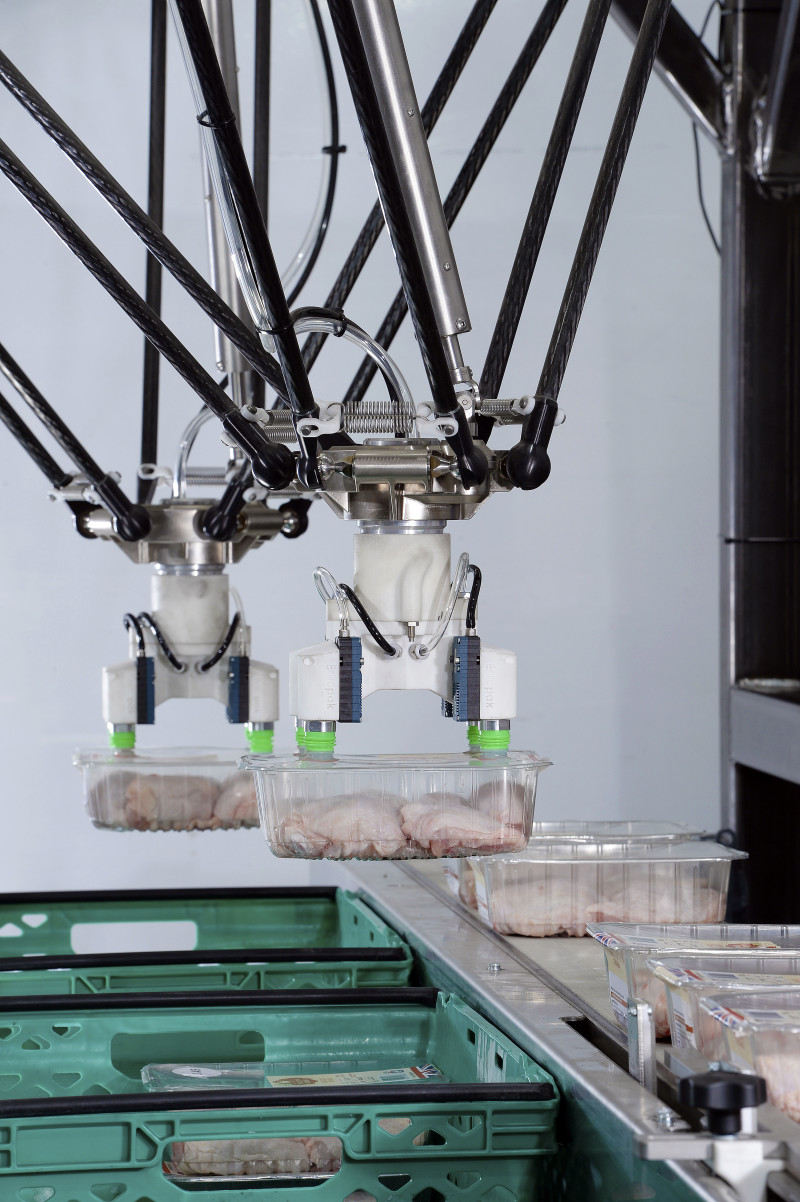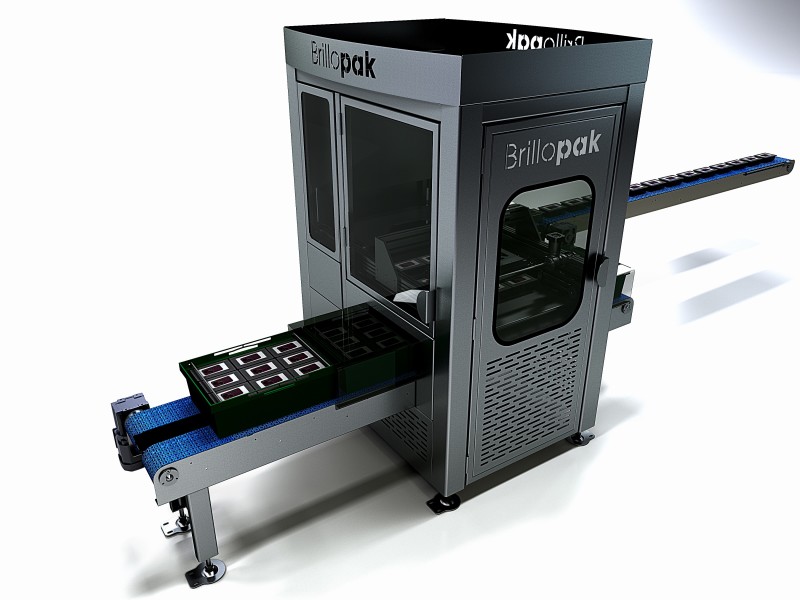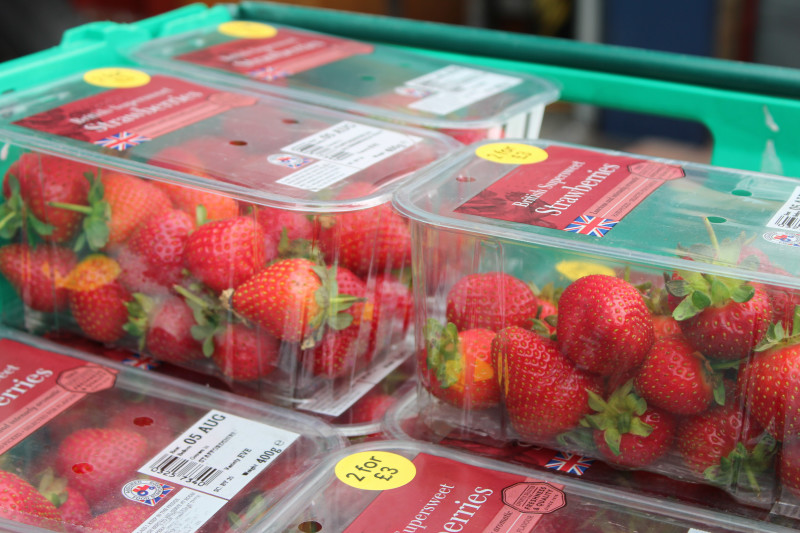Brillopak (United Kingdom) - Heightened demand for hygienic, secure and innovative packaging that not only improves product longevity, but increases its retail shelf appeal by delivering good product visibility, is leading to significant uptake in top seal and flow wrap machines by food suppliers. Rise in demand for these speedy automated packers has resulted in British-based case loader specialist Brillopak designing two end-of-line systems that can keep pace.
Recent reports hint that the food wrap packaging market in both developed nations and in emerging economies will witness new investments and growth opportunities. The flow wrap packaging market is anticipated to grow at a significant pace by 2027. Similarly, the global tray seal segment is set to experience an estimated 6% CAGR during 2018 to 2022. This growth is driven in part by rising demand for modified atmosphere and vacuum packaging. As a result of faster flow wrap and top seal machines, food suppliers are increasingly requesting automated case loading machines that can match these rapid line speeds.
David Jahn, director at Brillopak suggests that both segments look set to dominate the future packaging agenda due to their sustainability credentials. Purportedly, top tray seal options can reduce the volume of packaging materials by over 30%, while polypropylene film, the most common used film in overwrapping and flow wrapping has less waste, and can be recyclable too.
It’s a wrap!
Flow wrap machines can be found in most food factories. Many high street chains and supermarkets now make it their preferred packaging for hard fruit. Because the machines envelop and seal each product individually, it’s often the packaging of choice for bakeries, fruits and vegetables, confectionery - including chocolate, biscuits, cheese portions and even large and irregular shaped meat and poultry joints. Heat, or increasingly ultrasonic, is used to seal each pack.
Offering the flexibility of horizontal and vertical flow wrapping, it is not uncommon for machines installed in food factories today to generate in excess of 100 packs per minute, claims David.
With packs emerging from the wrapping machines at such speed, pick and place robotic case packers are invariably deployed on the end of the line to gently place products into distribution and retail cases in a controlled manner. Suction-style end effectors are frequently used, as these can better accommodate the irregular contours of flow wrap packs, and adjust swiftly to any size or weight of packs.
Brillopak’s approach to vacuum handling is different to others in the industry in that the company uses cups with independent vacuum generators as it offers greater control over the picking and placing operation. Brillopak expects to see new applications emerging in the next few years.
To automate the case loading of flow wrapped products, Brillopak recommends integrating a single pick system, as tests have proven it’s the safest and fastest method to deliver good presentation and avoid packaging and products getting damaged before and during transit to retailers. One system can also handle multiple product types and place into crates in multiple patterns, giving packhouses greater flexibility.
“Traditionally, to achieve anywhere close to 100 packs p/m in case loading, machines pick layers or rows of product,” David explains. “However, this method tends to use mechanical devices such as belts and turners for collating products. This means more moving parts; more opportunities to damage the fresh produce items, e.g. apples, and more line stops. These frequent line stops have a significant impact on line efficiency and ultimately bottom line profit.”
Brillopak’s solution is the P160 Unipicker dual robotic case loading cell. Two three-axis robot spider arms individually place each pack one by one gently into a retail crate. The cell can also accommodate a four arm delta robot.
The cell’s compact footprint, 3.2 metres by 1.5 metres, makes the P160 an estimated 15% smaller than any other dual robot layer-based automated handling system currently on the market. For optimal efficiency, the cell can be integrated with a Brillopak crate destacker and palletiser.
Top seal packaging gaining popularity:
Developments in peel and reseal, combined with an estimated 30% saving in plastic packaging materials and rapid advances in sustainable and compostable containers, means that top seal technology could soon overtake more wasteful clamshell lids.
Already popular with UK supermarket consumers, top seal is reported to extend shelf life by protecting against microbial spoilage. This is especially beneficial for perishable items like soft fruits and vegetables, as well as meat and fish.
Top seal technology is already widely used in ready meal manufacturing, plus soft fruits, such as blueberries, grapes and strawberries. Additionally, it’s popular for the packaging of ready-to-eat salads, vegetable stir fry packs, and individual snack portions like nuts and dried fruits.
“Another benefit with top seal with the ability to place of all the labelling information on the plastic film, helping to reduce packaging expenses and the use of cardboard wraparounds,” notes David. “For many suppliers, tray sealing offers better protection against leaks, for example ready meals, and reduces the chance of product tampering.”
Responding to market requests for a versatile, speedy - yet affordable - top seal case loader, Brillopak has unveiled its latest automated machine. Priced from £87,500, the BR Punnet Packer Series is capable of loading up to 180 top seal punnets and top seal trays p/m into full and half-sized crates, as well as lipped boxes.
The system, which can be interlocked with any top seal machine on the market, maximises throughput by collating product into a full layer, lifting and lowering in one seamless motion into the crate or box.
“The most common dilemma in punnet packing is not the movement of products, but managing the container in which they are being placed,” comments David. For example, with soft fruits, K37 is the most popular punnet size. However, because of the dimensions - 184x118x35mm - this size especially is a tight fit when placing into a tapered crate that is narrow at bottom.
He explains: “With punnets, a pack shape can vary by three millimetres. This can cause punnet edges to catch, overlap or flip when inserting into retailer containers. This in turn slows the line down while an operator manually resolves the issue and flattens the layer, before the next layer can be stacked on top. For many years this has held punnet packers back from investing in a fully automated system.”
Nothing protrudes and as a result no manual intervention is required. “The cycle time is literally lift, lower, push, lift, lower, push - next container,” highlights David.
As many of the latest tray seal machines handle a wide variety of pack sizes and sealing formats, the BR Punnet Packer has been designed to automatically adjust and match these. In addition to soft fruit punnets, the system is equally adept for loading tray sealed vegetables, meats, fish and shellfish into containers.
Future proofing end of line operations:
To meet the demand and match the speed of flow wrap and top seal machines, Brillopak’s two systems - the P160 Unipick Case Loader and BR Punnet Packer Series - offer packhouses low cost, small footprint and flexible automated solutions. “They are both faster and more flexible than any other systems on the market,” claims David.
With the trend towards shorter production runs, multiple SKUs within ranges and mixed cases and pallets, chances are, the lines of the future won’t be dedicated to a single product either. Packaging machinery will need to be able to switch frequently between numerous different products, presenting a challenge for efficiency.
Both machines are designed to handle multiple products and pack types, with product changeovers in less than five minutes, adds David.
Given that future proofing is the mainstay of every automation project, and in order to help de-risk investments, Brillopak is offering customers a ‘try before you buy’ service on both case loading systems.
Image 1 Caption:
Brillopak’s P160 can handle multiple SKUs and can load 100 flow wrap and VFFS packs p/m into crates.
Image 2 Caption:
The compact Brillopak BR2 Punnet Packer priced at £87,500, can be interlocked with any top seal machine on the market.
Image 3 Caption:
Punnet pack shapes can vary by 3mm, causing edges to overlap and flip when placing in layers into tapered or lipped retail containers.













































Interested? Submit your enquiry using the form below:
Only available for registered users. Sign In to your account or register here.